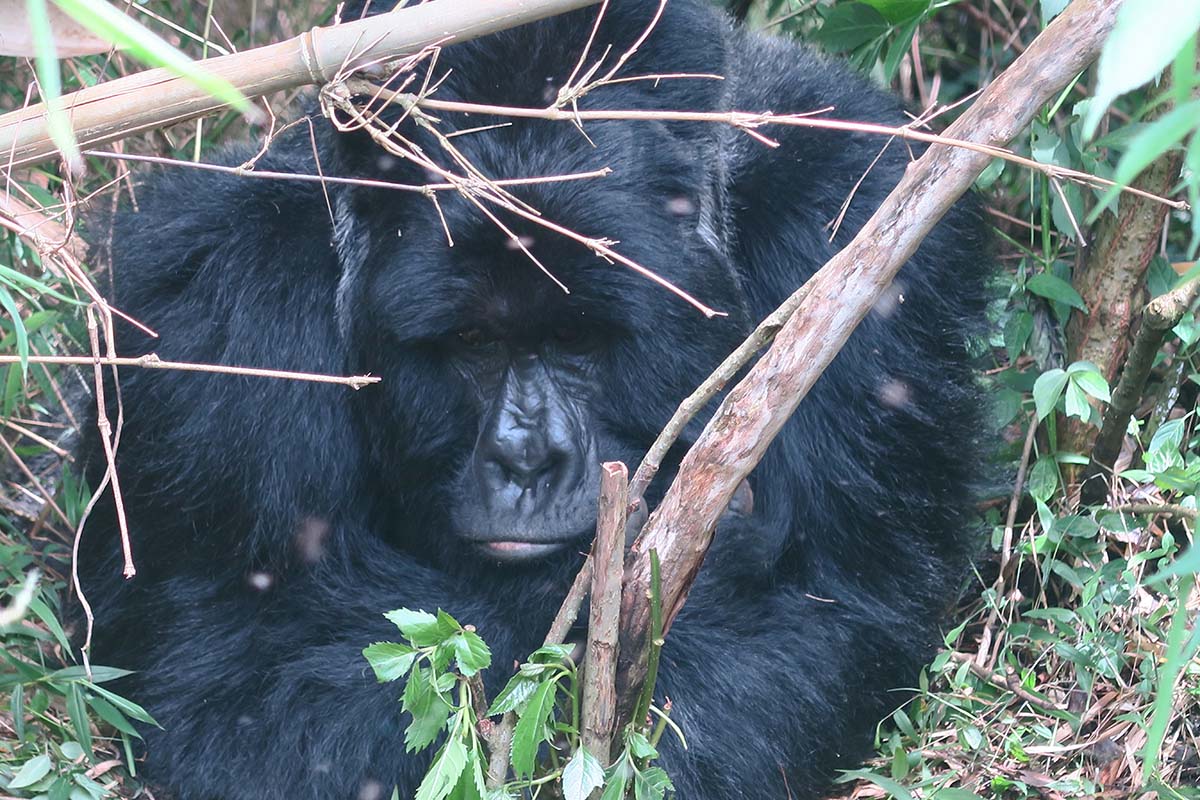Located in South Western Uganda, Bwindi is one of the best hot spots for adventure travel in Africa. This renowned impenetrable forest is home to nearly half of the remaining total population of the majestic mountain gorillas. Gazetted as a national park in the 1990s, these mist covered hills intertwined with large plains blanketed are the best destination to go gorilla trekking in Africa. Join us on a journey and explore one of Uganda’s oldest tropical forest that has survived through the last ice age for about 25000 years.
About the Forest
Bwindi Impenetrable Forest National park covers an area of about 327 sq km. Characterized by tangled vegetation draped over a deeply fissured landscape of steep slippery hills, the forest is home to incredible wildlife though it is most renowned for hosting the endangered mountain gorillas. The park’s highest altitude is at 2,607m above sea level (southern part) and the lowest at1,160m above sea level in the northern part.
This thick impenetrable forest was first gazetted as two crown forest reserves one being Kayonza and another being Kasatora in 1932. The two forest reserves were later combined in 1942 to form the Impenetrable Central crown forest. In 1964, the reserve was designated as an animal sanctuary to boost the protection of mountain gorillas and was renamed Impenetrable Central Forest reserve. In 1966, two other forest reserves became part of the main reserve, increasing its area to almost 321 square kilometers (124 sq mi) and was managed as both a game sanctuary and a forest reserve.
In 1991, the Central forest reserve was turned into a national park and named Bwindi Impenetrable National park. Gorilla tracking became a tourist activity in April 1993 with one habituated gorilla family of Mubare but since then other 8 groups have been habituated for tracking including Rushegura, Kyaguriro, Oruzogo, Habinyanja, Nshongi, Bitukura, Nkuringo as well as Kahungye groups.
The park was declared a world heritage site by UNESCO in 1994 because of its rich biodiversity which includes a variety of threatened and endangered species on the IUCN’s red list.
Things to See in Bwindi Forest
The park’s rich biodiversity includes about 120 mammal species of which 10 are primate species, and 45 are small mammals and is believed to be one of East Africa’s richest faunal communities. The park also has a long list of birds, about 350 species including the Albertine rift endemics, 310 species of butterflies, 51 reptiles, 88 moths and 27 species of frogs, chameleons, geckos and many endangered species.
The park is believed to have one of East Africa’s richest flora that includes over 1000 flowering plant species including 200 species of trees and 104 species of ferns. The northern (low altitude) sector is rich in species of the Guineo-Congolian flora. These include two species internationally recognized as endangered, the Brown mahogany and Brazzeia longipedicellata. This rich flora has been a result of the forest’s location being at the meeting point of the plain and mountain forests producing the Afromontane vegetation that is rare in Africa. The area harbors a high population of endemic species of the Albertine Rift.
Bwindi is the remaining home to some of the globally threatened species that include, high-profile mammals such as mountain gorilla, chimpanzee, l’Hoest’s monkey, the giant forest hogand African elephant; birds such as African green broadbill, Grauer’s swamp warbler, Turner’s Eremomela, Chapin’s flycatcher and Shelley’s crimson-wing; butterflies such as African giant swallowtail and Cream-banded swallowtail; carnivores like the side-striped jackal, African golden cat and African civet.
Gorilla Trekking in Bwindi Forest
The park’s most popular specie is the Endangered Mountain Gorilla believed to be man’s evolutionary cousin and the largest ape in the world. Bwindi shelters almost half of these gentle apes whose population in the world is estimated at about 750 individuals and their existence and survival is endemic to Bwindi and Mgahinga in Uganda, Virunga area in the Democratic Republic of Congo and Volcanoes in Rwanda. It is believed that Bwindi Forest shelters a population of about 340 gorillas according to the Gorilla census in 2006. The reduction in number of this critically endangered species is attributed to habitat loss and poaching by human beings.
Also present in this thick forest are 10 species of primates 7 of which are diurnal. They include common chimpanzee, L’Hoest’s monkey, Black and White Colobus, red-tailed monkeys, Vervet, blue monkey and olive baboon.
Would you like to go gorilla trekking in Uganda? Join us at Go Gorilla Trekking as you embark on one of the most rewarding and highly sought after African safari. Trek our cousins and take a look at other wildlife species in the Pearl of Africa and East Africa at large. You will be able to assess the evolution theory of mankind as you take a glance at the 13 primate species in this magnificent country including our closest cousin the chimpanzee.



